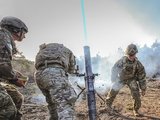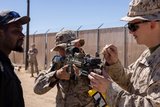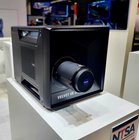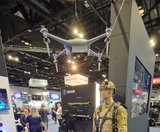Cubic tailors mortar simulator for the US Army
The company’s mortar trainer received improvements based on soldier’s feedback.
The Royal Australian Navy’s HMAS Adelaide has successfully completed Exercise Sea Explorer off the North Queensland coast, the service announced on 21 June.
The Royal Australian Air Force, Royal Australian Regiment and Townsville-based 2nd Battalion were among the 800 personnel embarked on Adelaide.
The ship conducted training exercises to test its ability to support embarked elements. It coordinated and managed various training activities that supported the larger objective to meet operational capability.
The beach team disembarked HMAS Adelaide through amphibious vehicles and descended on Cowley Beach to prepare for a wave of incoming equipment and personnel.
The soldiers conducted landing drills after the team prepared for their arrival. They practiced surface assaults from the ship onto Cowley beach using platforms such as inflatable boats and landing craft. Air force personnel on-board the ship provided air traffic control for the MRH-90 helicopters that transported the ground combat personnel to the beach.
The 2nd Cavalry Regiment rehearsed driving the light armoured vehicles from HMAS Adelaide landing craft to Cowley beach, and reversing them back into the craft.
The ship and embarked forces finally performed a non-combatant evacuation. Exercise Cowley Assist saw 160 role players descend on Cowley beach, to simulate a disaster rescue mission.
The Sea Series of exercises will culminate later in 2016 with the Exercise Sea Raider, which will assess whether HMAS Adelaide and sister ship HMAS Canberra can play a key role in the amphibious capability of Australia.
Army Lt Monica Merlo, Team Commander, said: ‘We are responsible for coordinating the movement of all stores and vehicles from Adelaide to the beach, and then onto the next objective. We do this by using two different types of small boats, as well as the LARCs, an amphibious vehicle, to transfer cargo to the shore. After we have set up, we expect around 500 military personnel and 37 vehicles across Cowley beach to conduct their training.’
Lt David Bannister-Tyrrell, Platoon Commander 21, said: ‘On approach to the beach, we take up security positions around the inside of the vessel and then tactically advance onto the beach where we once again adopt security positions.’

The company’s mortar trainer received improvements based on soldier’s feedback.

The company will operate in two new locations in the coming years to better support US services.

This type of tool provides more realistic training easing the incorporation of new scenarios that accurately represent the threats of the battlefield.

The Engineering Corps has been conducting individual instruction using FLAIM Systems’ Sweeper and should start collective deployments in 2025.

The next-generation platform is motion-compatible and can be used in OTW and NVG applications.

The system can be used to prepare soldiers for both drone offensive operations and CUAS missions.